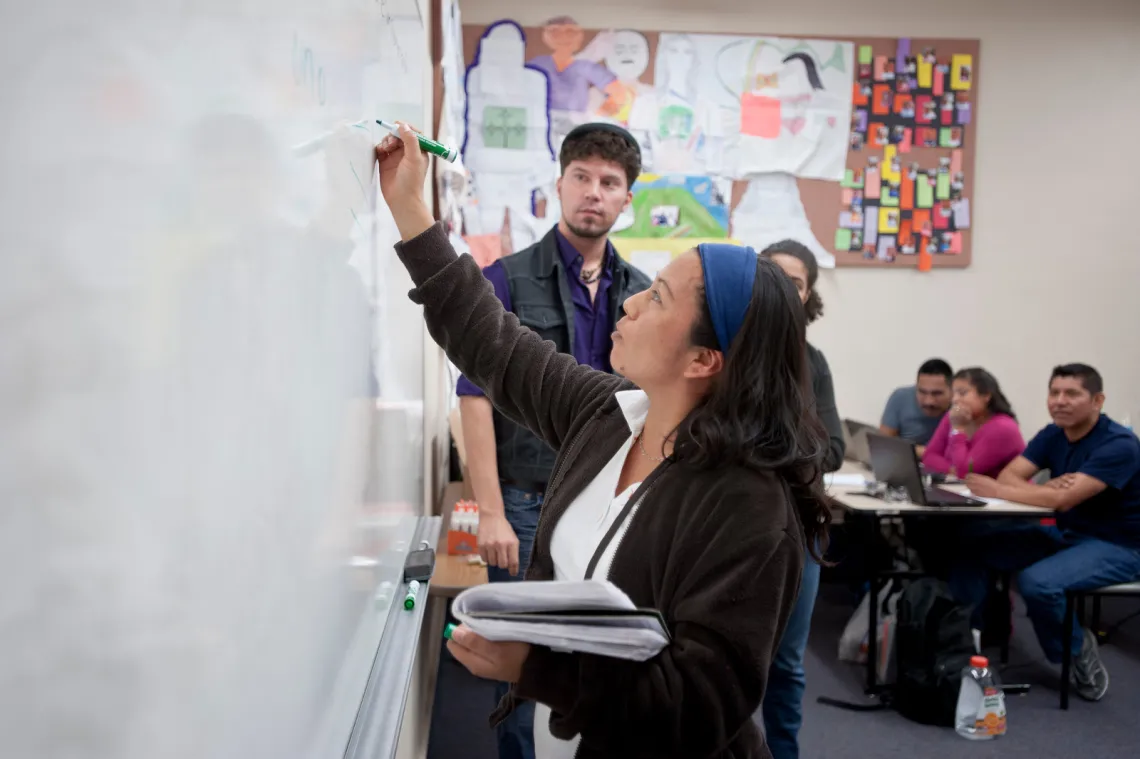Intersections of Diversity and Excellence

by Terrance Pitt-Brooke, University Fellow
How can we forge intersections? One way is to ensure inclusiveness and diversity. So I set out on a quest to learn how these principles inform the Graduate College and the larger institution.
On the Graduate College website, I found Graduate Diversity Program Director Donna Treloar’s Welcome letter:
The University of Arizona Graduate College is highly committed to recruiting and retaining a talented and diverse student body. Of particular relevance to higher education is the understanding that diversity of ideas, perspectives and approaches is critical to the advancement of knowledge. We believe that students from diverse backgrounds bring unique life experiences to the investigation of scholarly and scientific problems, and unique perspectives to interdisciplinary issues, of crucial importance to understanding our world and resolving problems confronting humankind.
But how much diversity is enough? When I spoke with Donna in her office, she answered:
Our goal is for student populations across campus to reflect the populations of minority groups across the state.
What are the barriers for students entering graduate school from a disadvantaged background?
Funding and access are big issues. For example, imagine being a first-generation college student. You don’t have anyone in your immediate family you can turn to for information. You don’t know what the process looks like. You don’t know who to ask. You may go to the wrong places. You don’t know what questions to ask. I can’t tell you the number of times students have told me, “I know I need information, but I don’t know where to begin.”
I asked the Graduate College Faculty Director of Diversity, Professor Frans Tax, about the need to support students from disadvantaged groups:
The student population of the University is getting more and more diverse. About 40% of the last couple of freshman classes have been from underrepresented ethnic groups. Our number of students receiving Pell grants and of first generation college students is increasing. Compared to twenty years ago, we have a lot of graduate students who need financial and mentoring to help get settled. Once they are settled, they are fine, but that first semester can be challenging. So supporting those students is important, but so is being aware that campus is diverse in other ways: we have more students coming back to school, military veterans, students with children, DACA [Deferred Action for Childhood Arrivals status] students. We need to find ways to support all of them.
UA’s new Senior Diversity Officer and Vice Provost for Inclusive Excellence, Jesús Treviño, gave me a beautiful metaphor that clarified the other part of the puzzle: inclusiveness.
We need to create interaction between the diverse communities making up the university. Diversity is like being invited to a dance; inclusiveness is like being asked to dance. And following the same analogy, the ballroom needs renovation and retrofitting to facilitate the dance, while the dance instructors—faculty—need to find new music and learn new dance moves to get this dance happening. We need to incentivize students to reach (dance) across group boundaries and work together to maximize the benefit provided by our rich diversity of worldviews and ways of understanding.
What about faculty diversity?
UA has always worked hard to provide faculty representation of minority communities. In addition, worldview is just as important. Whatever their background, faculty must value inclusiveness and put it at the heart of their work.
Inclusiveness isn’t solely an ethical imperative; it can improve and advance our work. Shelley Hawthorne Smith, of the Office of Fellowships and Community Engagement, explains:
One way to produce diversity is to create situations or discussions with people who have a variety of strengths and a variety of social or disciplinary advantages. It is often easier to work with people who share similar strengths and advantages, but, in the end, diversity can produce a much stronger end result. For example, with grant applications, reviewers are seldom homogeneous, so applying with a diverse group of people will help insure that you speak to the concerns of the reviewers. If one is applying for a fellowship or to a grant as an individual, having a diverse set of people review your application before you submit it will result in a stronger end product.
The Ford Foundation has enumerated six positive factors for the selection of candidates for the Pre-doctoral Fellowship, the Dissertation Fellowship, and the Postdoctoral Fellowship. Four of the six criteria concern diversity. The National Science Foundation, too, asks for the components of diversity in projects before funding them. These grant agencies are simply implementing what the research has proven: diversity increases creativity and innovation.
But how do we get from diversity to inclusiveness? How do you “invite someone to dance?” According to Laura Hunter, of the Office of Inclusive Excellence, you shouldn’t assume that someone who doesn’t share your intellectual or cultural background won’t understand your problem. Share your research interests as widely as possible—with people from different ethnic and cultural backgrounds, international students, and people from different academic disciplines. Try to recognize and eliminate your own unconscious biases and help others in your class or research group do the same. This will be the subject of Hunter’s presentation, “Reducing Unconscious Bias and Micro-Aggressions in the Classroom,” slated to open the Diversity in the Classroom Workshop Series for faculty and teaching assistants. Those who attend all four workshops will earn a Leader in Classroom Diversity and Inclusion certificate. Click here for further information on the series.
It might seem that on a campus as diverse as the UA, inclusiveness would follow naturally. And it often does. But by being conscious about our choices, we can make our academic careers much more inclusive—to the benefit of all.

